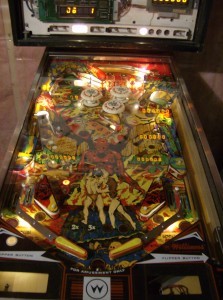capacitors
LCD Monitors
Recently, my “biggest” home project has been acquiring and repairing broken LCD monitors. Most of the time, LCD monitors stop working simply due to some blown capacitors inside, and for me, this is very easy to fix. Because this is a common problem, it has been easy for me to acquire screens like this. In fact, I now have a total of 3 monitors I’ve repaired myself, along with another display that the panel was physically damaged on the top, and another monitor I couldn’t locate the capacitor causing the problem, but that I plan to convert to LED.

The display on the left is a Norcent that was destined for the trash,
the right is a Philips with a band of damage along the top.
Home Device Repair
Hello again, it has been a little bit. College has picked up, and as I am moving in a little over a week, most of my projects have been packed. However, I’ve worked on a few things in the past little while.
Remember my half-repaired LCD monitor? Well recently I obtained yet another defective LCD monitor. Symptoms: no power, no lights, no noise. I may or may not post photos about this one, because I did all repairs without taking photos, and it was a pain to take it apart, and I wish not to do so again, hehe. Basically, the cause was 4 blown caps in on the circuit board, which I’ve replaced and it now functions fully, aside from a little squealing when in stand-by or turned off (I believe due to a capacitor that started blowing but that I measured to be within proper values.)
A few months ago, however, I did document a repair project I undertook. I have two home theatre amps at home that I’ve had problems with. At one point, both had stopped functioning properly. So, naturally, I decided to set to fixing them.
Gorgar: Photos
All photos about Gorgar. If there is anyone out there who is into pinball machines, who has any questions, feel free to leave them in the comments!
Yes, the next two are photos from another post, but there are new ones after the break!


